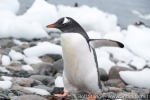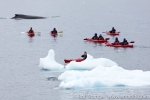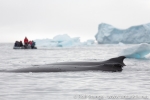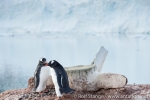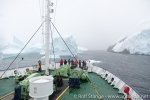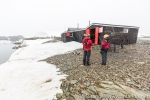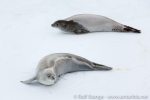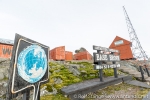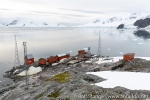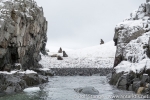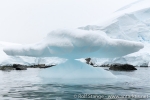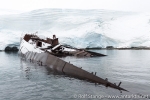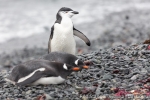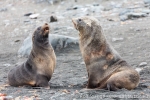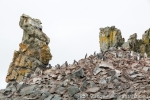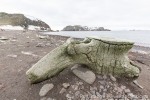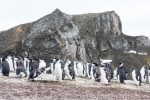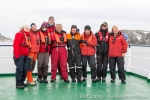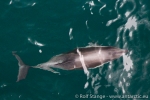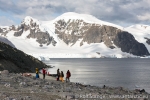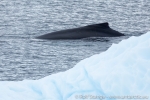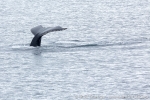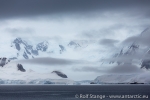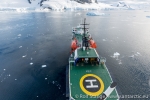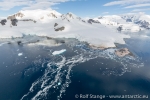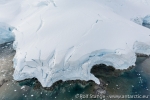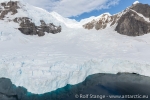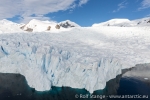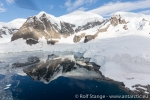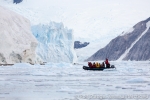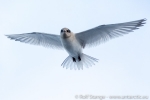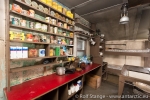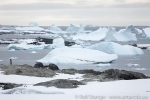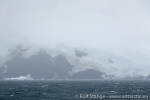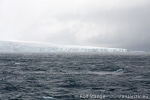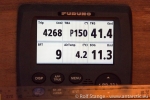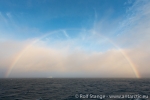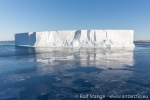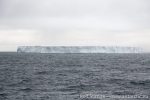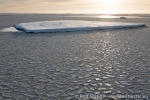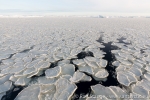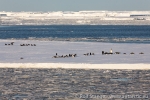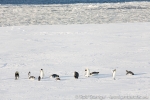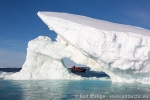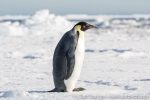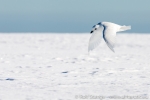Seitenstruktur
-
Spitsbergen-News
- Select Month
- March 2020
- February 2020
- March 2019
- January 2019
- December 2018
- September 2018
- June 2018
- May 2018
- April 2018
- March 2018
- February 2018
- January 2018
- December 2017
- November 2017
- October 2017
- September 2017
- June 2017
- May 2017
- April 2017
- March 2017
- February 2017
- January 2017
- December 2016
- September 2015
- April 2015
- March 2015
- February 2015
- January 2015
- December 2014
- October 2014
- August 2014
- June 2014
- May 2014
- April 2014
- March 2014
- November 2009
- April 2000
- Select Month

| Grytviken |
Home → March, 2017
Monthly Archives: March 2017 − News & Stories
Antarctic Peninsula – March 21-25, 2017
Tue
21 Mar
2017
A great trip to round the season off, with a lot of activities all the way down south to the polar circle. We had groups on board specializing in kayaking and diving, and their stories and photos were very impressive – yes, diving, that would be something, one day …
The weather was pretty much on our side, we had some very nice antarctic late summer days and no extreme weather. Yesterday we were sunbathing on deck in the Drake-Passage, can you believe it? Ok, we got blown out of Whalers Bay in Deception Island the other day, but that’s part of the game down here. We could not land on Detaille Island, the kombination of poor visibility, drifting ice near all possible landing sites and wind was just too much. But the Zodiac cruise around the island was good stuff!
Plenty of humpback whales, as one might wish for in the late season, and maybe not as many penguins as might have been some weeks earlier, but still quite a lot of them on shore, more than enough for heart and soul, eye and camera.
Gallery – Antarctic Peninsula – March 21-25, 2017
- gallery anchor link: #gallery_111
Click on thumbnail to open an enlarged version of the specific photo.
Let the pictures do the talking. Antarctica, it was great – see you again next year!
South Shetland Islands – March 20, 2017
Mon
20 Mar
2017
After a rather calm crossing of the Drake-Passage, our first exposure to Antarctica was to happen in the South Shetland Islands. And quite likely our only chance to see Chinstrap penguins.
And a good opportunity to get an impression of Antarctica’s wild weather. From zero to more than 40 knots within half an hour. Our afternoon landing in Deception Island was quickly turned into a ship cruise.
Gallery – South Shetland Islands – March 20, 2017
- gallery anchor link: #gallery_149
Click on thumbnail to open an enlarged version of the specific photo.
South Shetland Islands to Ushuaia – March 15-18, 2017
Wed
15 Mar
2017
Even 32 days in Antarctica will finally come to an end. The South Shetland Islands are the last stop of our Antarctic Odyssey, before we set course northwards, to more civilized latitudes. We do not have too much time left, but enough for an early morning landing. The weather is on our side, which is good for a visit to a small island on the edge of the Drake-Passage.
At least in comparison, it seems to be a tropical rain forest. Well, almost. There are some green patches, something we have not seen in a while. With the Chinstrap penguins, we can add yet another species to our species list, which is already quite impressive.
Then back to the open sea. A good two days across the Drake-Passage until we have reached southernmost South America. We pass Cape Hoorn in distance and darkness without taking too much notice of it, before we approach the Beagle-Channel in the company of dolphins. Then it is time to say goodbye to our good helicopter crew, pilots and mechanics, six of them in total, who take off in their birds and quickly disappear in the distance, not without a fine farewell to Ortelius.
Gallery – South Shetland Islands to Ushuaia – March 15-18, 2017
- gallery anchor link: #gallery_147
Click on thumbnail to open an enlarged version of the specific photo.
And while we are at it, we keep saying goodbye to many good people the next day in the morning. The very last day of a voyage is never a highlight, and port days are always very busy. But on the other side … if it is hard to leave a trip and associated people behind, then I guess it must have been pretty good 🙂
Too few short hours later, we are on our way again. Hasta la vista, Antarktis!
Errera Channel – March 13, 2017
Mon
13 Mar
2017
It is nice, for the difference, not to cover a large distance from one day to the next one. To wake up where we fell asleep. To calm down a bit, geographically, in a way.
We are in the Errera Channel as we wake up, just around the corner from Andvord Bay. And soon we are standing in a little antarctic penguin paradise. Gentoo penguins, gentoo penguins, gentoo penguins. Not in thousands anymore, but in hundreds, as they are standing on snow and rocks, looking a bit scruffy. They are moulting, probably annoyed by the itching of the feathers that are about to fall off and to be replaced by nice, new ones. Some are very curious and come close to have a look at these funny, colourful visitors.
Gallery – Errera Channel – March 13, 2017
- gallery anchor link: #gallery_145
Click on thumbnail to open an enlarged version of the specific photo.
Also the humpback whales in the Errera Channel and neighbouring waters are now in late summer mood. They have been feeding for weeks and months in productive antarctic waters. Now they are merely moving, snoozing and sleeping at the surface without doing much at all. Soon it is time to move northwards to warmer waters, also for them.
Andvord Bay – March 12, 2017
Sun
12 Mar
2017
Seeing Antarctica from a bird’s perspective is a dream that we wanted to realize today. That was easier said than done. We had to abort the first attempt in the rather early morning and we spent good part of the day searching for a place where the wind was not howling with 30-40 knots. Not easy.
Gallery – Andvord Bay – March 12, 2017
- gallery anchor link: #gallery_143
Click on thumbnail to open an enlarged version of the specific photo.
But then it worked. Conditions were ideal and everybody could once again board the helicopters to enjoy grand vistas of Andvord Bay and Paradise Harbour. The photos (there will be more and higher res pics after the trip) will tell the story!
Argentine Islands – March 11, 2017
Sat
11 Mar
2017
The Antarctic Peninsula! We had finally reached it, and I think that everybody here will agree when I say that we were really looking forward to seeing and stepping on land again.
The Argentine Islands were the perfect first stop for us, conveniently located, the first place we naturally reached, calm seas, little wind – there was no time to lose, and we went out as soon as we could in the afternoon. Icebergs were drifting everywhere in large numbers, both between the islands and in the more open waters surrounding them. Some steps up a snow field are enough to yield an amazing view over this icy scenery, and a Zodiac cruise between the islands provides all sorts of scenic insight.
Everybody could chose between either visiting the Ukranian Vernadsky Base, which is keeping some of the longest meteorological records of Antarctica, or Wordie House, the former British Base F, used from 1947 to 1954 and now part of Antarctica’s historical heritage.
Gallery – Penola Strait – March 11, 2017
- gallery anchor link: #gallery_141
Click on thumbnail to open an enlarged version of the specific photo.
The evening light in Penola Strait, south of the Lemaire Channel, was a true highlight. The scenic background unbeatable, the icebergs countless, the light golden and warm. I guess the only people who did not like it so much were the guys in the galley, as it was exactly dinnertime 😉
Peter I Island – March 7, 2017
Tue
7 Mar
2017
We had been waiting for this day with great curiousity, when the famous island of Peter I would rise above the horizon. Well, the first thing that was to be seen today was not the horizon, not to mention any island, but low clouds and snow. Any hope to make a landing today on Peter I Island was reduced by strong wind and poor visibility. But as always, hope the best and be prepared for the worst!
Then we saw it, it took a while, but then we saw the island through the clouds. A rather hostile impression, these inhospitable, steep cliffs of rocks and ice. Strong winds gusting up to force 8 and 9 were the welcome that the island had for us. Combined with mostly poor visibility, it was clear that we would not be able to make any kind of landing or flight here. Well, that is life in the wild Southern Ocean, deep in the screaming sixties.
Gallery – Peter I Island – March 7, 2017
- gallery anchor link: #gallery_139
Click on thumbnail to open an enlarged version of the specific photo.
The mountaineous island actually created a hole in the clouds on its leeward side, so the sun – a sight that we had been missing for some time! – was shining on the ice cap, where it was reflected like on a mirror. We even found a calm spot in the shelter of the island and quickly the zodiacs were ordered to be made ready.A landing was not an option on this steep coast on the southeastern side of the island, but a closer look would be great, wouldn’t it? But alas, as soon as the zodiacs were on the water and everybody ready on deck, snowy gusts and white caps came from both sides, so we made sure we got back on board again quickly … not today, that was the clear message, and not tomorrow either, that was the clear message of the weather forecast.
So we went and set course for the Antarctic Peninsula.
Kayak adventure in the Southern Ocean
Three young men have completed their their daring expedition last month, reported Foxnews. Two Chileans and a Spaniard paddled for eleven days within the South Shetland archipelago. They started their journey on January 20th in Punta Arenas, Chile. With the support of the Chilean coast guard, the three adventurers crossed the Drake Passage. Three days later they arrived at the Chilean research station Arturo Prat on Greenwich Island. With some delay they set out on January 28th. The kayakers traveled 20-30 kilometres per day. They explored the islands and met a pristine and unique nature. Their route led them along waterways, which no ship can sail on, because of the prevailing shallows.
The following section is a summarised translation from their blog entries.
After 22 miles we turned into McFarlane Strait. Here we were stopped by 35 knots of wind. We had to take shelter in Yankee Harbour. January 31st, we crossed the strait in poor visibility. Fighting strong currents we reached Point Williams and faced a great scenery. The next day is still windy and despite a strong swell of the Drake Passage, we venture to Barientos Island. The following day is foggy again. We reach Robert Island only with the help of the compass. But here we find shelter in the Chilean refuge hut Risopatron waiting for the forecasted storm to pass. Also February 3rd is rather seriously. In spite of breaking sea we enjoy the basalt cliffs and a pod of Orcas on this short leg. The following day 25 knots of wind were pushing us towards Nelson Island. The high swell exhausted. Nevertheless, we were happy when we were arriving at our day’s destination. We approached Maxwell Bay after surrounding Nelson Island on the South side. On February 6th, just before the finish, we got soaked again by wind and waves. It was the coldest day of the expedition! However, next day we received a warm deserved welcome on the Chilean Base Frei.
Map – Kayak adventure in the Southern Ocean

Route of the Chilean kayak expedition.
The South Shetland Islands are a weather-exposed land mass in the Southern Ocean. Cyclones that pass through the Drake Passage often touch the archipelago. The stormy sea strikes almost unbraked the coast of the islands. This archipelago is as wild and rough as the continent. Only a small area is ice-free, the rest is buried under massive glaciers. Thousands of penguins and seals rest and nest here. Sometimes you can even see single Macaroni penguins or a stray Emperor. Aside the common Crabeater seals and Weddel seals also Fur seals and Elephant seals often occupy beach. Some places are even “green”. The reason are algae and in sheltered spots mosses and lichens.
The South Shetland Islands are of volcanic origin. The kayakers passed areas with steep basalt cliffs that are characteristic for the landscape here. As bizarre as the cliffs protrude from the water, the sea-bottom at these locations looks similar. This forms local wild tidal channels, but also high breakers when old swell hits the coast. The glaciers contribute to the local climate. Cold, strong winds often whistle through the narrow waterways between the islands.
Why are people looking for such superlative ventures? In 2000 three young Americans wanted to carry out a similar expedition. But they did not get further than to circumnavigate Nelson Island. They had planned for Livingston Island and Deception Island. The weather forced them to the shorter route. Ten years later, the New Zealand girl Hayley Shephard planned the circumnavigation of South Georgia. The weather put a spoke in the wheel of her plans too and she not even made it half way. What all of the kayakers had in common is the experience of nature in an inhospitable remote area. In spite of all the cold and the isolation it is stunningly beautiful and offers an surprisingly abundant wildlife. Hayley knew that. So instead of personal fame she wanted the public alertness for the state of the albatrosses of the South Polar Ocean.
Wild coastline of Fildes Peninsula, King George Island.
The great crossing – March 4, 2017
Sat
4 Mar
2017
Eleven days. Imagine eleven days. That is the time that went without us going on shore anywhere. And that was nothing unusual!
We had visited McMurdo Base on February 28 and reached the Argentine Islands, just off the Antarctic Peninsula, on March 11. Counting the 28th twice because of the date line. And we have not been able to set foot on the Ross Ice Shelf or Peter I Island. Not due to a lack of good will – we were more than motivated to go, or rather, to fly to these places! But these extreme places are hard to reach. Landings there will only be possible on really good days, and those are the exception rather than the rule. So left the ship only once during the crossing, for the nice zodiac cruise in the ice (see last blog entry.). So considering the likelyhood of actually landing on the Ross Ice Shelf of Peter I Island, 11 full days at sea is pretty much simply what you have to expect and not at all a surprise. You have to know that before you come on such a trip! Knowledge that is, by the way, also available from the published itinerary, with a slightly different wording.
Why am I emphasizing so much on this? Because it is hard to imagine what it means to be at sea for 11 days. Some are perfectly happy with that, they will always find something to keep themselves busy with, they enjoy watching the waves, the horizon or the fog, the occasional iceberg, waiting for the back of a whale to break through the waves for a short moment. Reading, lectures, meeting all the people on the ship. Others do not enjoy it so much, and for them, these days can be quite long. It is easy to escape into the idea that the crossing will be done in 3 or 4 days, with more or less regular landings. Somewhere. No land anywhere near? So what! Who cares?
But then you are getting beyond day 5, 6, 7 … the icy coast of western Antarctica will never come in sight, it is as far as the moon. Of course it would be exiting to go there, to see it, even to make a landing, but you would need time and good charts. Time is limited, and good charts do not exist. Well, and once days 3 and 4 have gone by and we have just made a third of the distance, and that is just because there is no ice on our course or seriously bad weather to slow us down. Something that you can not take for granted in these latitudes.
The „antarctic Odyssey“, that is how I think of this voyage, bears this title with pride. It is, over long stretches, a very pelagic expedition.
Gallery: The great crossing – March 4, 2017
- gallery anchor link: #gallery_137
Click on thumbnail to open an enlarged version of the specific photo.
So, let’s enjoy the icebergs, the weather, the sea and Victoria’s great history lectures and all the other ones that this time has to offer – and that is quite a lot! Let’s enjoy the rather surreal feeling when the fog makes our little world here shrink to a bubble for days, in the middle of this endless ocean. Two thousand miles. With the speed of a very relaxed bicyclist.
Ice – March 2nd, 2017
Thu
2 Mar
2017
It was, by the way, not a spelling mistake that February 28 came twice in this blog. The date line.
We have now left McMurdo Sound and the Ross Ice Shelf behind us and we have begun the long, long voyage to Peter I Island and the Antarctic Peninsula. Early March is late summer in Antarctica, the time when most of the sea ice has disappeared. It is indeed a strong contrast to previous trips in this area. My experience in this region is not unlimited, and I am not sure if it is an exceptional ice year or just the season or a bit of both. Anyway, we do not see a lot of ice at all.
But then we get into some ice. Young pancake ice to start with, surrounding the ship on all sides. Very young, soft ice, fresh ice crystals, recently frozen sea water. But strong enough to support some penguins that are somewhere on this ice.
There are also some older ice floes. On one of them, we find what might be described as an antarctic zoo with no less than five typical animal species: Emperor penguins, Adelie penguins, giant petrels, snow petrels and crabeater seals. Unbelievable! The large number of Snow petrels alone would be stunning, if nothing else. I have never seen some many before in one place. You are so happy if you happen to see a lonely one in the distance on a trip to the Antarctic Peninsula, and here they are almost the whole time flying around the ship. Now we have more than a hundred on this ice floes, together with all this other fantastic wildlife.
Gallery – Ice – March 2nd, 2017
- gallery anchor link: #gallery_135
Click on thumbnail to open an enlarged version of the specific photo.
Later, the ice is more open again. The sun is shining, no wind, so it is not a question that we launch the Zodiacs and just enjoy getting close to the ice. The cruise is stunningly beautiful, all the ice, all these colours and shapes. Not to mention the wildlife that we are seeing, as various seals, Adelie- and Emperor penguins. Some describe this zodiac cruise later as one of the true highlights of the trip.
News-Listing live generated at 2025/May/01 at 02:04:13 Uhr (GMT+1)
